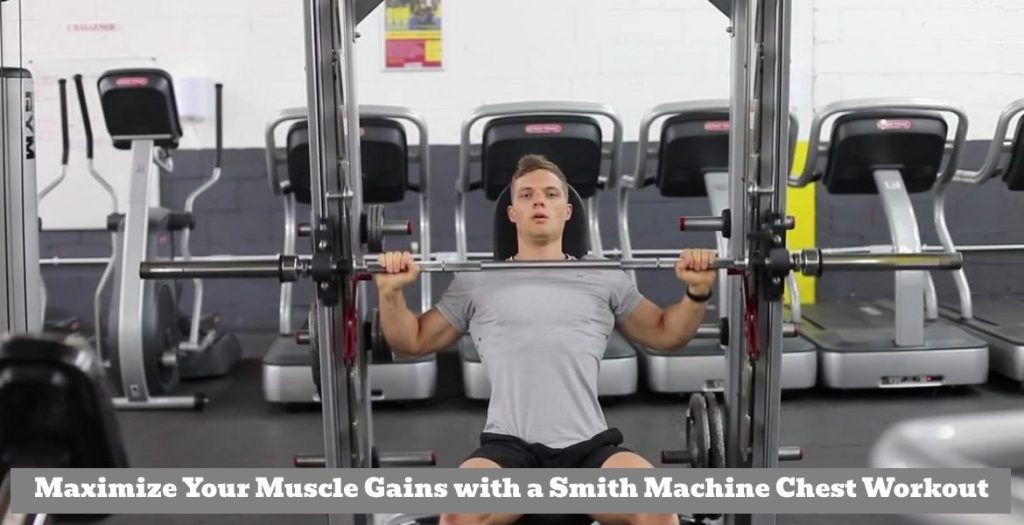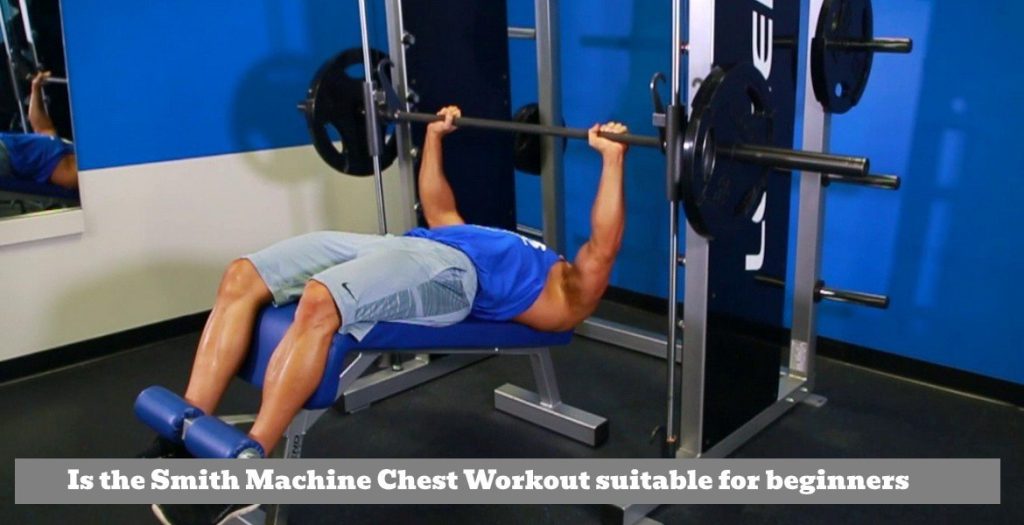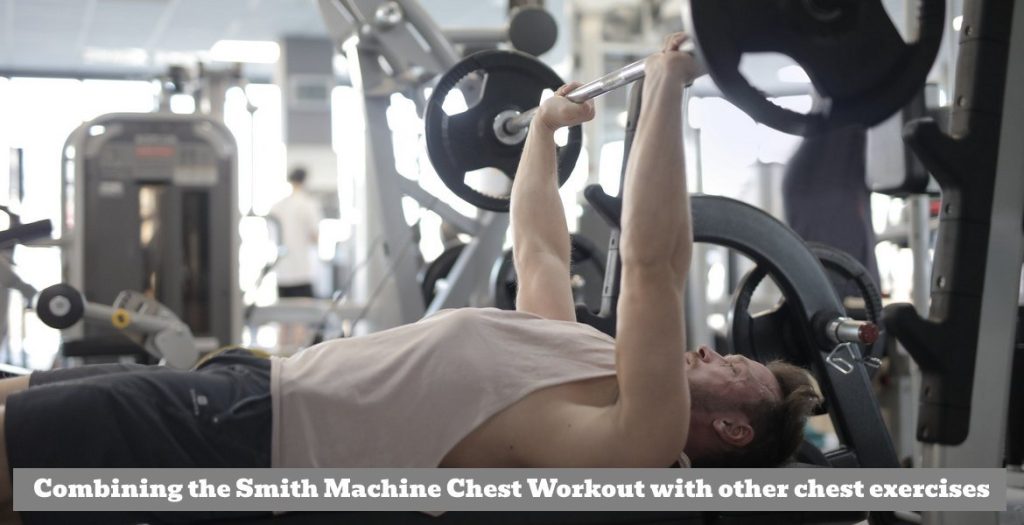Elevate Your Fitness Journey with Enjoyable Workouts! Discover a variety of exercises to keep your routine exciting and effective. From bodyweight workouts to simple home gym setups, find what suits your lifestyle best. With dedication and consistency, achieve your fitness goals and embrace a healthier, happier you. Join our community and embark on a journey towards a fitter, more vibrant life today!
Maximize Your Muscle Gains with a Smith Machine Chest Workout
Most people think of the chest as a small and insignificant muscle group. But that’s not true! The chest is actually one of the most important muscles in the body, and it’s essential for both cardiovascular health and muscle growth. That’s why it’s important to include a chest workout on your regular routine.
A Smith Machine is a type of weight machine that uses leverage to create resistance against the user’s body. The user stands with his feet shoulder-width apart and winstrol results after 2 weeks rests his hands on top of the plates, which are at shoulder height. This creates tension against the muscle group being worked, helping you to achieve better results faster.


What is a Smith Machine Chest Workout
A Smith machine chest workout is a strength training routine that focuses on the chest muscles using a Smith machine. A Smith machine is a weight machine that consists of a barbell fixed to a vertical track. The barbell is attached to a set of bearings that allow it to move up and down the track. The machine also has adjustable safety stops that can be set to prevent the bar from dropping too low.
A typical Smith machine chest workout might include 3-4 sets of 8-12 reps for each exercise, with a rest period of 1-2 minutes between sets. It’s important to gradually increase the weight and intensity of your workout to continue challenging your muscles and promoting muscle growth.
How is a Smith Machine Chest Workout different from a regular chest workout
A Smith machine chest workout and a regular chest workout are different in several ways. Here are some of the key differences:Stability: One of the main differences between a Smith machine chest workout and a regular chest workout is the stability provided by the Smith machine. Because the barbell is attached to a track, it moves in a fixed vertical plane, which can help stabilize the weight and reduce the risk of injury.Range of motion: Another difference between a Smith machine chest workout and a regular chest workout is the range of motion. With a Smith machine, the barbell moves in a fixed vertical plane, which can limit the range of motion compared to a regular chest workout. This can be both an advantage and a disadvantage, depending on your goals and fitness level.Variation: A regular chest workout typically includes a wider range of exercises and equipment than a Smith machine chest workout. For example, a regular chest workout might include dumbbell flyes, cable crossovers, or push-ups, which can help target different areas of the chest muscles and provide more variation in your workout routine.Core activation: With a regular chest workout, you may engage your core muscles more actively than with a Smith machine chest workout. This is because with a regular chest workout, you may use more stabilizing muscles to keep the weight stable, which can help improve core strength and stability.
Ultimately, whether you choose to do a Smith machine chest workout or a regular chest workout depends on your fitness goals, preferences, and experience level. Both types of workouts can be effective for building chest muscle and improving overall fitness.
Is the Smith Machine Chest Workout suitable for beginners
Yes, a Smith machine chest workout can be suitable for beginners. The Smith machine provides a stable and controlled environment, which can be beneficial for those who are new to strength training. Additionally, the safety stops on the machine can help prevent injury and make it easier for beginners to what is the score of the kings game learn proper form. When starting a Smith machine chest workout, it’s important to start with a weight that is comfortable and manageable. Focus on proper form and gradually increase the weight and intensity of your workout over time.
It’s also important to allow your muscles time to rest and recover between workouts, as this is essential for muscle growth. It’s always a good idea to consult with a certified personal trainer or fitness professional before starting a new workout routine. They can help assess your fitness level and provide guidance on the most appropriate exercises and weight ranges for your needs. Additionally, they can help you develop a workout plan that takes into account your goals, preferences, and fitness level.

Target specific areas of chest with a Smith Machine Chest Workout
You can target specific areas of the chest muscles with a Smith machine chest workout. Adjust the bench to an incline position to target the upper portion of the chest muscles, also known as the clavicular head. Adjust the bench to a decline position to target the lower portion of the chest muscles, also known as the sternal head. Perform the bench press on a flat bench to target the overall chest muscles, with an emphasis on the sternal head.
Adjust the bench to an incline position and perform flyes with dumbbells to target the upper portion of the chest muscles. Adjust the bench to a decline position and perform flyes with dumbbells to target the lower portion of the chest muscles. Remember to maintain proper form and use a weight that is appropriate for your fitness level. It’s also important to gradually increase the weight and intensity of your workout over time to continue challenging your muscles and promoting muscle growth.
How many times a week should do a Smith Machine Chest Workout
The frequency of your Smith machine chest workout depends on your fitness goals, experience level, and recovery time. As a general guideline, it’s recommended to work out each muscle group, including the chest muscles, at least twice a week for optimal results. However, it’s important to allow your muscles time to rest and recover between workouts, as this is essential for muscle growth. If you’re a beginner, you may want to start with one or two chest workouts per week and gradually increase the frequency as your fitness level improves. More advanced lifters may be able to work out the chest muscles three or four times a week, as long as they allow for adequate recovery time between workouts. It’s also important to listen to your body and adjust your workout frequency as needed.
If you experience excessive muscle soreness, fatigue, or other signs of overtraining, you may need to reduce the frequency of your workouts. On the other hand, if you don’t feel challenged by your current workout frequency, you may want to increase it to promote further gains. Ultimately, the optimal frequency for your Smith machine chest workout depends on your individual needs and goals. It’s always a good idea to consult with a certified personal trainer or fitness professional to help you develop a workout plan that takes into account your goals, preferences, and fitness level.
What are the benefits of a Smith Machine Chest Workout
The Smith Machine can be a useful tool for performing chest exercises, and there are several potential benefits to incorporating this equipment into your chest workout routine. The Smith Machine is a fixed path of movement that can help provide stability and support during chest exercises, which can be particularly helpful if you are new to strength training, recovering from an injury, or training without a spotter. The Smith Machine allows you to adjust the height of the bar, which can help you find the perfect range of motion and maintain proper form throughout your chest exercises. By adjusting the angle of the bench or the position of your body, you can target different areas of your chest muscles, such as the upper or lower chest.
The Smith Machine can be used for a variety of chest exercises, including bench press, incline press, decline press, and more. By changing the angle of the bench or the grip of the bar, you can add variety to your chest workout routine and work different parts of your chest muscles. It’s important to note that while the Smith Machine can be a helpful tool for chest exercises, it should not be the only equipment used in your chest workout routine. Incorporating other exercises, such as dumbbell or barbell chest exercises, can help improve muscle balance and reduce the risk of injury.

How prevent injury during a Smith Machine Chest Workout
When using the Smith Machine for chest exercises, there are several steps you can take to help prevent injury. It’s important to warm up your muscles and joints before starting any exercise. Start with a few minutes of light cardio, such as jogging or cycling, and then perform some dynamic stretches to help prepare your muscles for the workout. If you’re new to the Smith Machine or are trying a new exercise, start with a lighter weight to allow your body to adapt to the movement pattern. Proper form is critical for preventing injury during any exercise, and this is especially true when using the Smith Machine. Make sure your feet are firmly planted on the ground, your core is engaged, and your back is flat on the bench. Keep your elbows tucked in, and avoid bouncing or arching your back.
If you’re lifting heavy weights or are new to the exercise, it’s a good idea to have a spotter with you. A spotter can help you lift the weight and ensure that you’re using proper form. As you become more comfortable with the exercise, you can gradually increase the weight. Avoid increasing the weight too quickly, as this can increase your risk of injury. If you experience any pain or discomfort during the exercise, stop immediately. Pain or discomfort can be a sign of an injury, and continuing to exercise can make the injury worse. By following these tips, you can help prevent injury during your Smith Machine chest workout and ensure that you’re getting the most out of your exercise routine.
What are some variations of the Smith Machine Chest Workout
The Smith Machine can be used to perform a variety of chest exercises, and there are several variations you can try to target different areas of your chest muscles. Here are a few variations of the Smith Machine chest workout:Incline Smith Machine Bench Press: Adjust the bench to an incline position, and perform a bench press using the Smith Machine. This variation will target the upper portion of your chest muscles.Decline Smith Machine Bench Press: Adjust the bench to a decline position, and perform a bench press using the Smith Machine. This variation will target the lower portion of your chest muscles.Close-Grip Smith Machine Bench Press: Use a close grip on the bar, with your hands spaced closer together than in a standard bench press. This variation will target your triceps and the inner portion of your chest muscles.Wide-Grip Smith Machine Bench Press: Use a wider grip on the bar, with your hands spaced wider than in a standard bench press. This variation will target the outer portion of your chest muscles.Single-Arm Smith Machine Bench Press: Perform a bench press using only one arm at a time, alternating between your left and right arm. This variation will help improve balance and stability, as well as target your chest muscles one side at a time.Plyometric Smith Machine Push-Ups: Perform push-ups using the Smith Machine bar as a platform. Lower yourself down to the bar and then push yourself up explosively, so that your hands come off the bar. This variation will help improve explosive power and can be a great way to add intensity to your chest workout.
These variations can help add variety to your chest workout routine and target different areas of your chest muscles. However, it’s important to use proper form and start with lighter weights when trying new exercises to reduce the risk of injury.
Combining the Smith Machine Chest Workout with other chest exercises
Combining the Smith Machine chest workout with other chest exercises can help you achieve a well-rounded, balanced chest workout. By combining these exercises with the Smith Machine chest workout, you can target different areas of your chest muscles and improve overall strength and muscle development.
When combining exercises, it’s important to use proper form, start with lighter weights, and gradually increase the weight as you become comfortable with the movements. Additionally, be sure to take adequate rest between sets and exercises to allow your muscles to recover and avoid overtraining.

Can women do the Smith Machine Chest Workout
Yes, women can certainly do the Smith Machine chest workout. In fact, the Smith Machine is a popular piece of equipment for both men and women to use in their chest workouts. The chest muscles are a major muscle group, and building strength and definition in this area can help improve posture, upper body strength, and overall physique. The Smith Machine is a versatile piece of equipment that allows you to perform various chest exercises, such as the bench press, incline press, and decline press.
These exercises can be adjusted to your fitness level and goals by changing the weight, the number of repetitions, and the number of sets. It’s important to note that women and men have different physiological characteristics, and women may have a harder time building muscle mass due to differences in hormones, metabolism, and body composition. However, with a consistent workout routine and proper nutrition, women can certainly build strength and improve muscle tone in their chest and other areas of their body. As with any exercise, it’s important to use proper form, start with lighter weights, and gradually increase the weight as you become comfortable with the movements. Additionally, be sure to take adequate rest between sets and exercises to allow your muscles to recover and avoid overtraining.
How long does a typical Smith Machine Chest Workout session take
The length of a typical Smith Machine chest workout session can vary depending on several factors, such as your fitness level, the number of exercises you perform, the number of sets and repetitions you do, and the amount of rest time you take between sets. However, a typical Smith Machine chest workout session can take anywhere from 30 minutes to an hour. This workout includes four exercises and targets different areas of your chest muscles.
The number of sets and repetitions can be adjusted based on your fitness level and goals, but the workout generally takes around 30 minutes to complete. It’s important to note that the quality of your workout is more important than the duration. Instead of focusing on the length of your workout session, aim to perform each exercise with proper form, use weights that challenge you but are safe, and take adequate rest time between sets to allow your muscles to recover.
